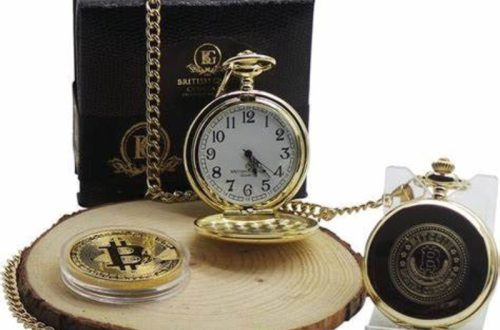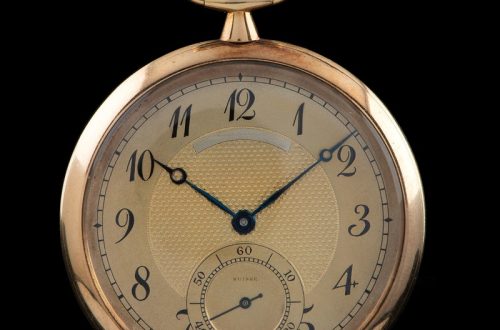Introduction to Mechanical Watches
Mechanical watches stand out in the world of timekeeping with their unique combination of tradition and engineering. Unlike their digital or quartz counterparts, these watches tell time through a complex system of springs and gears, all powered without the need for batteries.
For watch enthusiasts, a mechanical watch is more than a timepiece; it’s a testament to craftsmanship. These watches carry a sense of elegance, representing a long heritage of watchmaking. Their appeal lies not in cutting-edge technology but in the mechanical artistry that ticks within.
In this introduction, we will explore what makes mechanical watches tick, their key components, and the differences between the automatic and manual wind varieties. Understanding these basics is the first step to appreciating the intricate world of mechanical watches.
Whether you are a seasoned collector or just starting to explore luxury watches, knowing what is a mechanical watch is crucial. It’s essential for making informed decisions about your next timepiece and for appreciating the value of the watch on your wrist.
Key Components of Mechanical Watches
Understanding the key components of mechanical watches is essential to appreciating their intricate design and functionality. Let’s break down the essential elements that make up a mechanical watch:
- Mainspring: This is the power source for a mechanical watch, a tightly coiled spring that stores energy when wound.
- Gear Train: This system transfers energy from the mainspring to the escapement, consisting of various sized gears.
- Escapement: It manages the release of the watch’s stored energy in precise intervals, thus ensuring time accuracy.
- Balance Wheel: Working with the escapement, this wheel oscillates back and forth, regulating the gear train’s movement.
- Jewels: Tiny synthetic rubies placed within the movement to reduce friction and wear, enhancing the watch’s longevity.
- Dial & Hands: The face of the watch where time is displayed, with hands that move to indicate hours, minutes, and often seconds.
These fundamental parts work in harmony to create the marvel of mechanical timing. The absence of a battery highlights the skilled craftsmanship that goes into assembling each piece, resulting in a watch movement that can keep time with precision and artistry. Every mechanical watch owner or enthusiast acknowledges the allure of these components not just for their function, but for the tradition and expertise they represent.

Difference Between Automatic and Manual Wind Watches
Understanding the distinction between automatic and manual wind watches is vital for anyone interested in mechanical timepieces. While both harness the power of a mainspring, their methods of energy storage differ.
With a manual wind watch, you must wind the spring manually by turning the crown, typically every day. This mechanical action stores energy that keeps the watch ticking.
Automatic watches, however, ease this process. They wind the mainspring through the natural movements of the wearer’s wrist. A rotor within the watch moves as you go about your day, thereby winding the spring without manual input.
One might think automatic watches are not mechanical, but that’s incorrect. Both manual and automatic watches are mechanical in design. The difference lies in how the mainspring receives energy.
Automatic watches are self-winding; they recharge themselves while worn on the wrist. If worn daily, they can keep time indefinitely without winding.
Manual wind watches, on the other hand, require regular, deliberate action. You need to wind them by hand to maintain their power reserve. This ritual connects the wearer with the watch in a traditional manner.
Automatic watches typically have a rotor that adds bulk, making them thicker. Manual watches can be slimmer, as there is no need for a rotor.
Consider maintenance, too. Both types of watches need regular servicing to stay in precise working order. However, the simplicity of manual watches sometimes makes them less costly to maintain.
Choosing between an automatic and a manual watch often comes down to personal preference. If you seek convenience and don’t mind a slightly bulkier watch, an automatic might be for you. If you value the traditional aspect and enjoy the act of winding your watch, a manual wind could be more appealing.
How Automatic Watches Work
Automatic watches, also known as self-winding timepieces, harness the motion of the wearer’s wrist. A weighted component, typically called a rotor, moves as the wrist moves. This movement winds the mainspring automatically, keeping the watch powered.
The rotor pivots on its staff, which is centrally located on the back of the movement. As the rotor turns, it winds the mainspring, giving the watch a reserve of energy. This energy reserve keeps the watch running even when it’s not being worn.
While the watch is being worn, any movement of the wrist causes the rotor to spin. This motion is harnessed and transferred into winding energy. The beauty of this system is that it eliminates the need for daily hand-winding.
It is important to note that if an automatic watch is not worn for a day or more, it may stop. This does not indicate a malfunction. To restart the watch, simply wind the crown a few times or gently shake the watch to move the rotor and begin the winding process.
Overall, automatic watches provide ease of use and a seamless experience for the wearer. They are an excellent choice for anyone who prefers the convenience of not having to regularly wind their watch manually.
Advantages and Disadvantages of Automatic Watches
Automatic watches offer a blend of innovation and tradition, making them an attractive choice for many watch enthusiasts. However, they come with their own set of advantages and disadvantages.
Pros of Automatic Watches
- Convenience: The self-winding feature means no daily winding is necessary, providing ease for the user.
- Perpetual Movement: As long as you wear them, they keep running, maintaining the power reserve.
- Craftsmanship: The complex mechanism reflects skilled watchmaking, which is often admired.
- Eco-Friendly: They eliminate the need for battery replacements, making them more sustainable.
Cons of Automatic Watches
- Price: They can be more expensive than manual watches, due to their complexity.
- Maintenance: Servicing is needed, potentially at higher costs due to intricate mechanics.
- Size: The rotor mechanism may add bulk, creating a thicker and heavier watch.
- Rotor Noise: Some may notice a noise caused by the rotor, which can be distracting.
Automatic watches are practical for regular wear and busy lifestyles. Yet, for those looking for a thinner profile or a quiet timepiece, they may be less suitable. Despite their drawbacks, the convenience and engineering behind automatic watches often make them a favored choice.

How Manual Wind Watches Function
Manual wind watches, often known as hand-wound watches, embody the essence of traditional horology. They operate through the wearer’s deliberate action of winding the crown. This mechanical process transfers energy to the mainspring, which then powers the watch’s gears and hands.
Here’s a step-by-step look at how these watches function:
- Winding the Crown: By rotating the crown, typically clockwise, you manually wind the spring inside the watch.
- Storing Energy: The wound mainspring stores the energy needed to move the watch hands.
- Transferring Power: As the mainspring slowly unwinds, it releases energy to the gears.
- Moving the Hands: The gears then convert the energy into movement, which is displayed on the watch’s face.
- Regular Winding Needed: To keep the watch operational, you need to wind it regularly, usually once a day.
- Feeling the Resistance: As you wind, you’ll feel resistance. This signals that the mainspring is fully wound.
The beauty of manual wind watches lies in the intimate interaction between the timepiece and its wearer. Regular winding is a ritual that watch enthusiasts cherish, connecting them with the legacy of watchmaking.
Pros and Cons of Manual Wind Watches
Pros of Manual Wind Watches
- Tradition: Symbolizes the timeless tradition of horology.
- Slim Design: Lacks a rotor, allowing for a sleeker, more comfortable fit.
- Cost-Effective: Generally less expensive than their automatic counterparts, due to simpler mechanics.
- Control: Offers a hands-on approach to timekeeping that many enthusiasts enjoy.
Cons of Manual Wind Watches
- Regular Attention: Demands daily winding to keep functioning.
- Maintenance: While simpler, still requires routine servicing.
- Risk of Overwinding: Incorrect winding can potentially damage the watch.
- Inconvenience: Not suitable for those who prefer a ‘grab and go’ watch experience.
Manual wind watches, steeped in tradition, allow wearers to connect with their timepiece on a personal level. Their ability to be thinner can appeal to those desiring a more understated look. However, they require a mindful relationship with the wearer, needing daily interaction to maintain their functionality. While perhaps not the choice for everyone, manual watches offer a certain charm that is appreciated by purists and traditionalists in the watch community.
Factors to Consider When Choosing Between Automatic and Manual Wind Watches
When deciding whether an automatic or manual wind mechanical watch best fits your preferences, there are several factors to consider. Here are some critical points:
- Lifestyle: Your daily activities play a crucial role. If you’re active, an automatic watch might be preferable since it self-winds with motion.
- Maintenance: Both watch types need regular care. Consider if you are willing to wind a watch daily or prefer the convenience of an automatic.
- Aesthetics: Consider the style and look of the watch. Automatic watches might be bulkier due to the rotor. Manual watches typically have a sleeker profile.
- Price: Budget can be a deciding factor. Automatic watches can be more expensive due to their complexity. Manual watches may be more affordable.
- Personal Connection: Some aficionados enjoy the ritual of winding a manual watch. Think about whether this tradition appeals to you.
- Collection Goals: If you’re a collector, you might value one type over the other. Automatic watches offer modern ease, while manual watches connect you to horological history.
- Resale Value: If investment potential is important, research how both types hold value over time.
All these factors contribute to making an informed choice between automatic and manual wind mechanical watches. Weigh these considerations against your personal preferences to find the perfect match for your wrist and your lifestyle.

Notable Mechanical Watch Brands and Models
When venturing into the realm of mechanical watches, the choices are vast and varied. Certain brands stand out, known for their commitment to quality and watchmaking heritage. Let’s take a look at some of the most esteemed mechanical watch brands and models that enthusiasts and collectors might consider.
Rolex:
A titan in the watch industry, Rolex is synonymous with luxury and precision. Models like the Submariner and Daytona have become iconic.
Omega:
Famous for the Speedmaster, also known as the Moonwatch, Omega has a celebrated history and a reputation for reliability.
Patek Philippe:
Renowned for intricate complications, Patek Philippe watches, such as the Nautilus, command respect and admiration.
Audemars Piguet:
The Royal Oak is a signature model that broke the mold with its unique design and superb mechanics.
Tudor:
Offering quality similar to Rolex but at more accessible prices, Tudor’s Black Bay and Pelagos are popular choices.
Panerai:
Known for their bold design and nautical heritage, Panerai’s Luminor and Radiomir are favorites amongst enthusiasts.
Each of these brands has made substantial contributions to the development of both automatic and manual wind mechanical watches. They offer not just a way to tell time, but a piece of history, a work of art that celebrates the finest aspects of human ingenuity and craftsmanship.
Choosing from these brands often depends on personal style, the type of movement preferred, and the unique features offered by each model. The mechanical watch chosen by an individual says much about their taste and the value they place on time-honored watchmaking traditions.
Maintenance and Care for Mechanical Watches
Proper maintenance and care are crucial for ensuring the longevity and functionality of mechanical watches. Whether you own an automatic or manual wind watch, there are key practices to follow that can keep your timepiece in top condition for years.
- Regular Servicing: Just like a car, a mechanical watch requires routine check-ups. Experts recommend servicing every 3 to 5 years.
- Winding Practices: For manual watches, wind daily but do not overwind. Automatic watches should be worn regularly or placed in a watch winder.
- Clean Exterior: Use a soft cloth to wipe down your watch. Keep it free from dust, dirt, and moisture.
- Avoid Magnets: Exposure to strong magnetic fields can affect watch accuracy. Keep your watch away from magnets.
- Water Resistance: Know your watch’s limits. If it’s not water resistant, keep it dry. For those that are, ensure seals are checked during servicing.
- Shock Avoidance: Mechanical watches can be sensitive. Avoid dropping them or hitting them against hard surfaces.
- Temperature Changes: Extreme temperatures can harm watches. Don’t leave them in hot cars or freezing conditions.
By following these steps, you can maintain the performance and appearance of your mechanical watch. Regular care keeps these timepieces not only running smoothly but also preserves their beauty and prevents unnecessary repairs.
Final Thoughts on Mechanical Watches
In the intricate world of horology, mechanical watches stand as a testament to human creativity and precision engineering. Whether automatic or manual, these timepieces represent more than just instruments for tracking time; they embody a legacy of craftsmanship and a connection to a timeless tradition. For watch enthusiasts, the decision between an automatic and a manual wind watch often boils down to personal preference, lifestyle considerations, and an appreciation for the craftsmanship involved.
Automatic watches offer convenience and are ideal for those with active lifestyles, while manual watches provide a sense of engagement and tradition that many collectors cherish. When choosing your mechanical watch, consider how the movement type aligns with your daily life and which advantages matter most to you.
Brand loyalty can also guide your choice. Brands like Rolex, Omega, and Audemars Piguet have pioneered in producing iconic mechanical timepieces that continue to fascinate collectors and aficionados alike. Regardless of brand or model, a mechanical watch is more than an accessory; it’s a personal statement and a piece of mechanical art.
Caring for your mechanical watch, be it automatic or manual, ensures its longevity. Regular servicing, mindful handling, and understanding its maintenance needs will allow your timepiece to not only keep accurate time but also to potentially be an heirloom passed down through generations.
Mechanical watches are not merely tools but an expression of personality and history. They invite us to participate in the ritual of timekeeping in a way that digital devices cannot match. Whether you’re drawn to the self-sufficient nature of an automatic watch or the hands-on experience of a manual wind watch, each mechanical timepiece will offer a unique journey into the realm of classic watchmaking.




